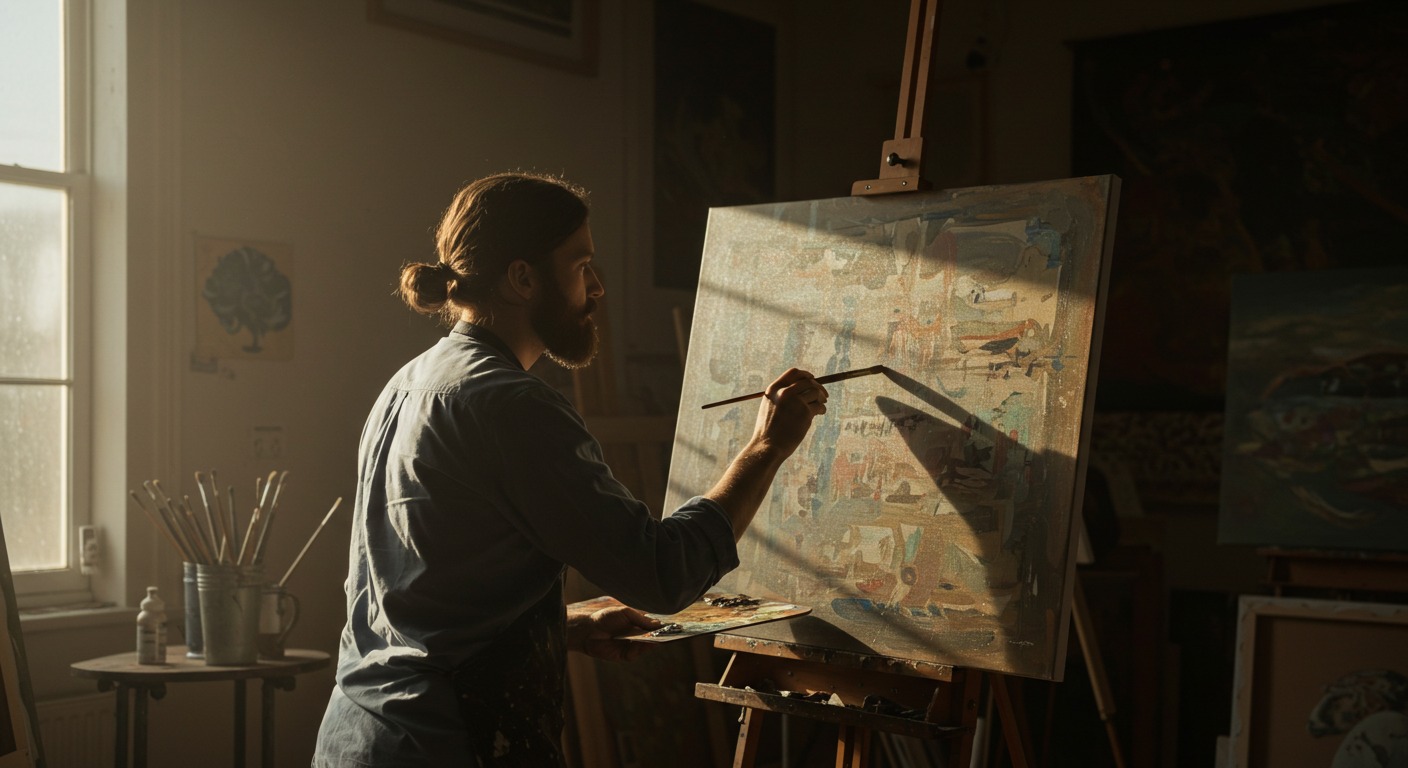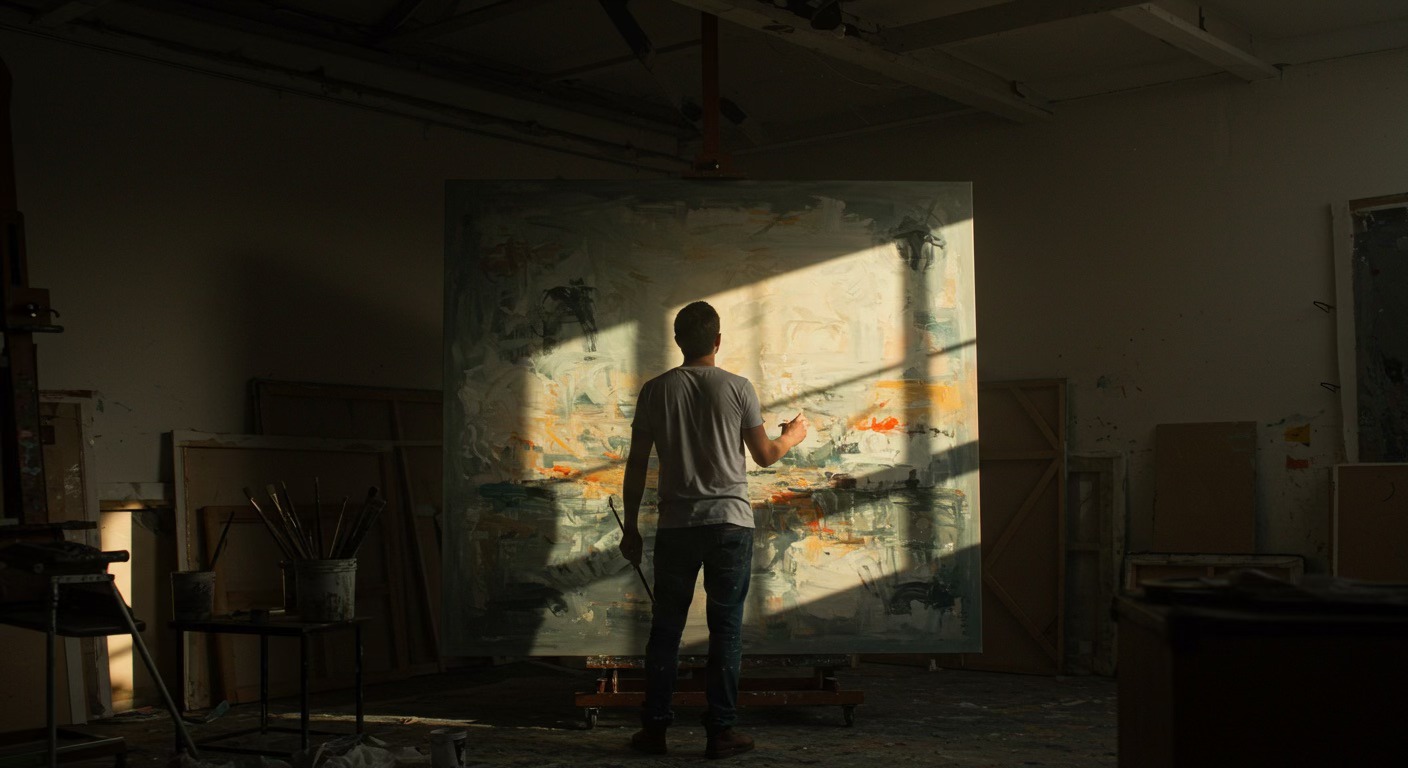
Art is more than color, form, and technique—it is a language of emotion, a bridge between the artist and the viewer. A truly memorable piece does more than capture the eye; it resonates with the soul, leaving an impression that lingers beyond aesthetics.
What makes certain artworks unforgettable while others fade into the background? One key element is storytelling. Art that conveys a story fosters an emotional bond, inviting viewers into an experience rather than just presenting a visual composition.
Why Storytelling Matters in Art
Storytelling gives art a sense of depth and personal connection. It allows artists to infuse their work with meaning, intention, and emotion, transforming a painting or sculpture into something profoundly human.
An artwork can do more than depict a scene—it can express longing, joy, conflict, or hope. Through composition, symbolism, and technique, an artist can invite the audience into a world of emotion and reflection.
How to Weave Storytelling into Your Art
1. Begin with Emotion, Not Just Concept
Before starting a piece, consider:
What emotion do I want to evoke?
What message or experience am I expressing?
How can I translate this into color, form, or texture?
Art rooted in emotion naturally carries depth. Even if a viewer does not fully grasp the intended meaning, they can still sense its presence.
2. Use Symbolism and Metaphor
Storytelling often relies on symbols and deeper meanings, allowing art to unfold over time.
A single red thread might symbolize love, loss, or destiny.
A blurred figure in the background could represent a fading memory or unseen presence.
Color choices can set a mood—warm golds for nostalgia, deep blues for solitude.
Rather than explicitly explaining the meaning, allow the viewer to discover it. The most compelling stories are those that reveal themselves gradually.
3. Create a Sense of Narrative or Movement
Even in still images, a sense of progression can bring a piece to life.
Compositions that lead the eye across the canvas can mimic the rhythm of reading a story.
Figures captured in motion suggest an unfolding event, leaving room for interpretation.
Contrasts—light vs. shadow, order vs. chaos—can create visual tension and intrigue.
A story in art does not need to be literal. It can be abstract, emotional, or deeply personal—what matters is the feeling of something unfolding.
4. Embrace Authenticity and Imperfection
Some of the most powerful artworks feel raw and genuine.
A visible brushstroke can carry emotion.
A rough edge might suggest vulnerability.
An unfinished section can leave room for interpretation.
While technical skill is valuable, authenticity is what truly resonates with people.
5. Invite the Viewer Into the Story
A compelling piece of art is one that allows the audience to find their own meaning within it.
Leave space for interpretation so different viewers can connect in their own way.
Explore universal emotions—love, loss, hope, isolation—to create a broader connection.
Consider how scale, framing, and placement influence the viewer’s experience.
When someone sees a reflection of their own emotions or experiences in a piece, that is when a true connection happens.
The Lasting Impact of Storytelling in Art
Art that tells a story is not just seen—it is remembered. It becomes a conversation, an emotion, a presence in someone’s life. It has the power to inspire, challenge, and move people in ways words often cannot.
So the next time you create, ask yourself: What story am I telling? Not just in the subject matter, but in the colors, textures, and emotions woven into the piece.
Because when art tells a story, it becomes more than an object—it becomes a voice, a memory, and a lasting legacy.







